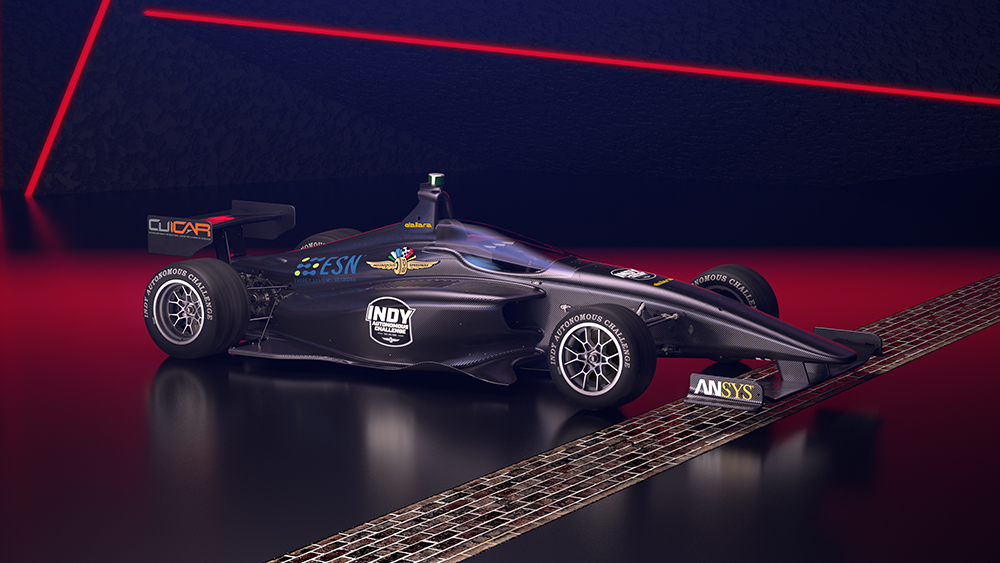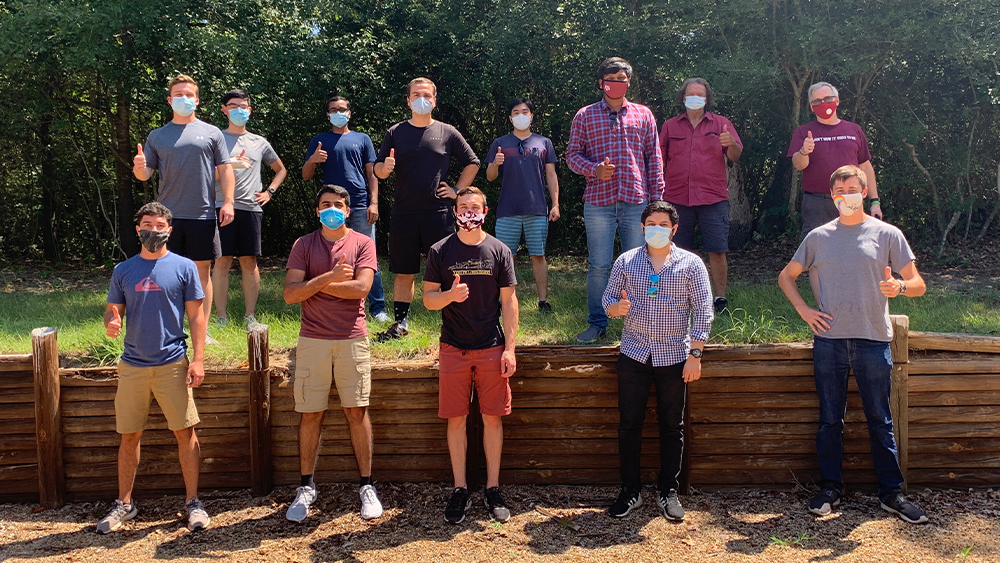It's Oct. 23, 2021, and tensions are high at the Indianapolis Motor Speedway. Engines are roaring, the crowd is cheering and racecars are lining up without a driver in sight. The green flag waves to start the race that’s taking hands-free to a whole different level.
There will be no drivers competing at the speedway on this date. Instead, autonomous racecars programmed by teams across the world, including a team from Texas A&M University, will go head-to-head in the first-ever Indy Autonomous Challenge in pursuit of $1.5 million in rewards.
The Texas A&M Indy Autonomous Challenge team, otherwise known as Reveille Racing, began their journey over two years ago. It started with Dr. Ivan Damnjanovic, professor in the Zachry Department of Civil and Environmental Engineering. Damnjanovic was a member of an exploratory committee determining the plausibility of a completely autonomous race. The event was announced in November of 2019.
"There are cars that have some autonomy, such as lane-keeping cars that can recognize the left and right side of the lane and steer the wheel," said Lance Decker, a doctoral student in the Department of Multidisciplinary Engineering and member of the team. "The difference is that autonomous cars on the road are going 30 miles per hour with the help of a driver, and we'll be going 200 miles per hour without human intervention."

After the announcement, teams began to work on their racecars. Although they do not physically have the car yet, the teams were provided with software and tools capable of communicating with a modified Dallara IL-15 racecar. The team's responsibility is to develop code that propels the racecar around the track while avoiding other cars in the fastest time possible. Since every car will be the same, the quality of programming is what differentiates the teams.
"All of the teams will have the same hardware," said Damnjanovic. "What we are replacing is the driver. The autonomous driver should be able to perceive the environment while also applying some sort of strategy. This can include things like the car's path or how aggressive you want to be around the corners. The driver is essentially the computer code."
The teams are competing in increasingly difficult virtual reality events to test and improve their coding before they receive their car.
"An original task was to drive a lap around the Indianapolis Motor Speedway," said Decker. "The next competition was competing for the fastest lap and trying to avoid an obstacle on the road. We are writing code that is transportable to the real car. Then we will make adjustments to create connectivity between the virtual world and reality."
To help understand driver strategy and close the gap between simulations and actuality, the team is working with Dr. Wendi Zimmer, professor in the Department of Health and Kinesiology sport management division. Zimmer is providing insight into the science and strategy of racecar drivers that separates the average driver from the outstanding driver. Outstanding drivers understand the best routes around the track, how to pass other cars effectively and the fastest methods for tackling corners. The driver can also react immediately to what he/she perceives is happening. The challenge is to replicate the actions of an experienced driver in computer code.
"Strong racers can ‘feel’ what their car will do in relation to racing variables, such as the track conditions, car functionality (or loss of) and other vehicles on the track," said Zimmer. "Racers adjust and adapt as variables change. With the autonomous factor, the ‘feel’ is removed. Still, the variables remain. How can you control for the variables when you lose that ‘feel?’ We have a fantastic team working on software to control for changing variables and recreate the ‘feel’ in an autonomous approach."

The competition has spanned over two years, and the team has encountered and overcome many obstacles. Damnjanovic hopes that the work put into this challenge will benefit the students far beyond race day.
"We are bringing in students to work on realistic projects that integrate different competencies, which is of enormous value as they advance in their professional careers," said Damnjanovic. "We hope the students hold a sense of accomplishment, of pride and of ownership of a two-year project in which they are going on a worldwide stage."
The team is currently preparing and raising funds for the competition. If the team wins, they plan to use the prize money to endow a scholarship at Texas A&M.
"Right now, this is a one-off event," said Decker. "Our goal is to turn it into something perpetual where other students can come along, take the same car and continue to compete. It would be amazing to help provide this opportunity to others who share this interest."
Students on the team include Yangwoo Kim, Jerry Cazares, Aaron Angert, Tom Nan, Chen Liang, Caleb Peck, Daniel Haseler, Krishna Kumar Sunil and Michael Rawlins. Other members involved from Texas A&M include Dr. Dezhen Song, Dr. Stephanie Paal, Dr. David C. Breeding, Dr. Jinjin Pan and Steve T. Cox.